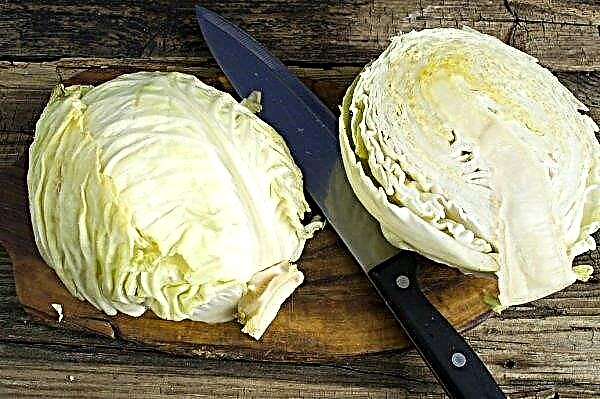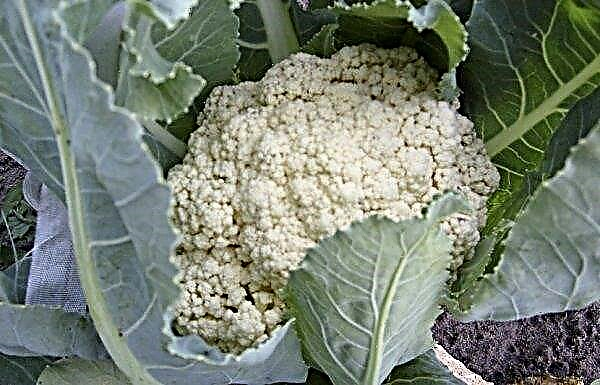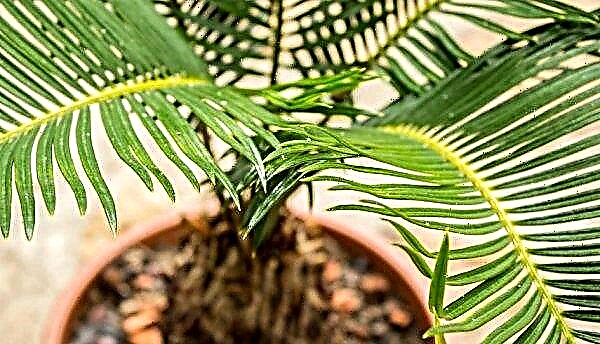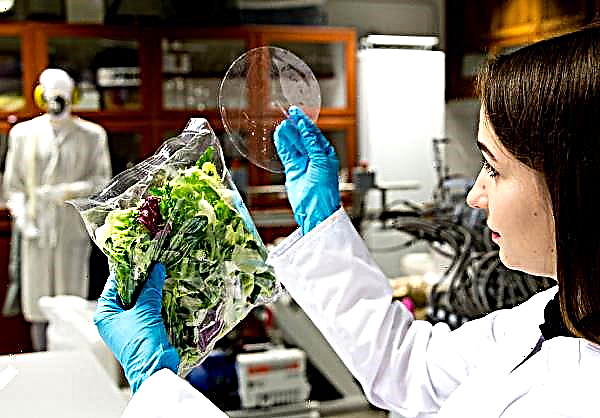Cypress is an evergreen plant. May be a tree or shrub. Different representatives of the genus cypress have either a pyramidal crown or sprawling. These species of conifers are the oldest on earth. They survived as they were several million years ago. The beauty of cypresses and the aroma of their needles are very attractive. Plants of this species are grown both at home and in the open ground. The article will help gardeners and amateurs understand the reasons why the shrub can dry out.
The causes of yellowing. What do we have to do
This species has special qualities. For example, cold resistance. Wintering in the apartment is hard tolerated by cypress. But a sharp hypothermia can adversely affect the plant. For example, you bought and transported a seedling in cold weather. The temperature difference is obvious.
Important! Trim carefully - remove only old branches. Removing a large number of shoots in the first year is fatal.
If the cypress you grow began to turn yellow and dry, then watering or temperature conditions were probably violated. Lack of lighting and fertilizer also affects the plant. Conifers suffer from various diseases, they are affected by pests. It is necessary to understand the reasons, to understand what steps should be taken when yellowing needles, which preventive measures to use against cypress diseases.
 A bush growing at home in a pot and its root system may run out of space.
A bush growing at home in a pot and its root system may run out of space.
First you need to inspect the bush. Bare the roots of the earth and see if they are alive. If all is well, a plant should be transplanted. Choose a substrate special for conifers. Do the drainage. The presence of a water tray will be very appropriate. It is useful to cover the transplanted tree with film, polyethylene, but do not allow condensation to accumulate. Ventilate the ground by opening the film. And most importantly - spray with a spray gun a couple of times a day. The causes of drying out and protection methods are listed step by step below.
Wrong watering
Cypresses love hydration, because in nature they grow near water in humid air. It is important to water plants, spray, sprinkle - it all depends on where exactly your bush grows. A moderate supply of moisture will revitalize the conifer. By the way, this genus of plants gives preference to warm and standing water. It is important to ensure that the topsoil does not dry out. When it began to dry, then the time came for irrigation.
With age, cypress need to be watered more and more, because the root system is growing. Thanks to the drainage system, water penetrates well into the soil, flows down and does not stagnate at the bottom. From the pan, in which there is a pot with a plant, cypress can take the necessary amount of water roots. Summer watering is more common than winter.
Important! Do not over-water. It can cause fungal diseases.
Fertilizer lack
It is useful to feed cypress. Due to the lack or lack of nutrients, the plant also dries. The use of special fertilizers for conifers based on nitrogen, phosphorus and potassium is recommended. Use such funds twice a month. The transplanted plant should not be fed, but if the soil was chosen suitable. The bush will take all the necessary nutrition from fresh soil.
 There are also special nutritional granules (Agrecol, Royal Mix). They gradually release beneficial substances over time. If you started using this type of fertilizer, then for two weeks the cypress will be provided with the necessary nutrition.
There are also special nutritional granules (Agrecol, Royal Mix). They gradually release beneficial substances over time. If you started using this type of fertilizer, then for two weeks the cypress will be provided with the necessary nutrition.
Lack of pot space
If you notice that the upper and side shoots have turned yellow, then the reason for the poor appearance of the cypress is most likely due to the lack of space in the pot for the roots. In this case, the plant should be transplanted urgently. To do this, you need to take the bush by its base and turn over the tank in which it grows. Gently release the roots. Remove the earth from them, that is, the part that is easily crumbled.
Now transplantation should be performed. The pot this time should be significantly larger. At the bottom of the new tank, pour soil with a layer of a few centimeters. Next, lower the roots of the bush and fill them with soil. It is worth lightly compacting the earth and watering it. A transplant at home with good growth can be done every two years.Did you know? Cypress is a hero of an ancient Greek legend. It symbolizes endless sorrow.
 By the way, to easily get the plant out of the pot, put it in a bucket of water - the soil will get wet, and the root system will be easy to extract.
By the way, to easily get the plant out of the pot, put it in a bucket of water - the soil will get wet, and the root system will be easy to extract.
Incorrect temperature and lighting
A coniferous houseplant of this kind does not like direct sunlight, but it needs good lighting. The required light time is approximately ten hours. It is difficult to maintain such a regime constantly. Therefore, you can purchase special lamps. Infrared and phytolamps should be used as much as there is not enough natural light. High air temperature, its dryness and lack of ventilation adversely affect the coniferous plant.
The bush needs a temperature below room temperature, and in the summer it is good for him to be outdoors. Expose a houseplant to the balcony. Here it will receive the right amount of light. Natural conditions are suitable for growing cypress trees. The garden plant has enough natural light, it responds well to lower temperatures. In partial shade, the bush grows well.

Disease
Not only a violation of agricultural technology harms cypress. He has diseases characteristic of him.
Among these:
- Fusarium
- brown shute;
- a variety of fungi.
With fusarium, the roots are affected - they begin to rot. Further, the disease affects the entire bush: the shoots turn yellow, the bark turns brown. Sick cypress can be saved if it is less than half affected. Take advantage of propagation by the cuttings. Choose the top healthy shoot of the diseased plant, cut it with pruning shears, treat with foundationazole (within 8 hours). Put it in water so that it takes root. A healthy branch should handle it.
Video: cypress red needles
If the plant has darkened, acquired plaque (in the form of a web), then it is affected by the shute. Outdoor cypresses usually become ill due to their growth in shade and high humidity.
Processing time and name of funds are presented in the list:
- Late autumn, spring after snowmelt. Kurzat (0.7%) or copper chloride (0.5%).
- During the spring (March - April). Frequency - after 10 days. Fundazole (0.2%).
- In the spring before the growing season. "Terminator" and "Zircon". Content per 10 l of water: 0.05% of the first and 0.01% of the second.
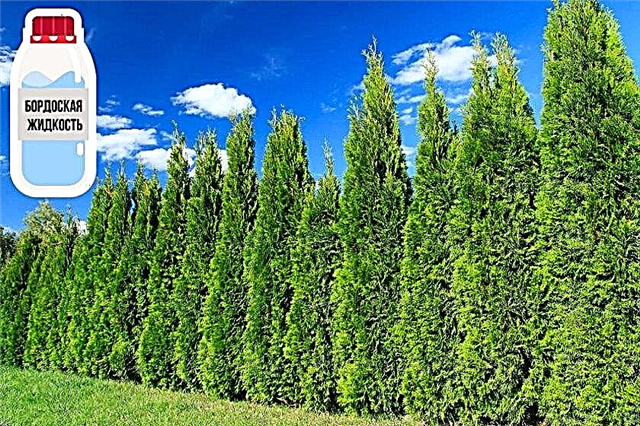
Fungal diseases cause the branches to wither and become dry, and the bark is damaged. Loosening, trimming old shoots - the prevention of such diseases. If your cypress grows in the garden, you should promptly remove the fallen leaves from under the bush. The diseased plant is best removed. The remaining shrubs are to be treated with a solution of copper sulfate (1%). Use this way: dilute in 10 l of water (+ 50 ° C) 100 g of the drug. Spray.
Did you know? The ancient Egyptians made sarcophagi from cypress, because it contains a lot of resin, which ensures the preservation of wood.
Pests
Scabies, spider mites, diverse aphids are classic cypress pests.
Symptoms of a home plant:
- white web on the shoots;
- the appearance of brown spots on the trunk;
- white insects visible to the eye.

Insecticides should be used for plants in the house ("Aktofit", "Fitoverm" or others, see the instructions on the packaging of each drug). They also use a soap solution (dilute 1 part of soap in 6 parts of water), they wash the bush to get rid of insects.
The guards can be assembled by hand, after wearing gloves. It is important to reprocess the same pest control products. From aphids, tobacco dust is also used. There are various ways to use it. Try this: half a glass of dust purchased in a garden store, pour 1 liter of water, cook for an hour, do not forget to add the evaporated liquid.
Next, leave the broth to infuse for a day. Strain and add another 2 L of water. With the resulting product, spray the shrub 2 or 3 times in a week. Caterpillars may appear on the outdoor cypresses. These are pests such as silkworms or dustpan (butterflies). Caterpillars affect the kidneys, cones. Bark beetles and bark beetles eat. The plant weakens and turns yellow. It’s best to destroy it.
Removal of the affected areas, injections into the cortex helps against insects (use Artelik). The drug "Fufanon" (see instructions from the manufacturer on the packaging) or similar process the plant from May to early summer (June).
Cypress Disease and Pest Prevention
Necessary measures that serve as the prevention of diseases:
- compliance with the temperature regime (absence of differences, wintering at + 5 ° C);
- ventilation;
- the acquisition of healthy planting material;
- landing in uncontaminated soil;
- spraying with drugs;
- protection of branches of street plants from damage (garter);
- processing of all damaged areas (by special means, paints);
- removal of old shoots;
- loosening the soil;
- compliance with irrigation standards;
- correct lighting mode.
Video: how to save potted cypresses
With the right and neat actions of caring for cypress at home, you will receive a beautiful coniferous shrub in a cozy environment for you. A garden plant will require more care, but it will also please you. Do not forget to periodically water, loosen and regularly inspect the cypress. Pay attention to the condition and color of the shoots. If the bush looks strong and healthy, then you are doing everything right.






